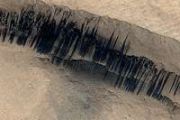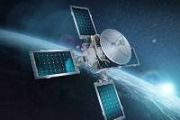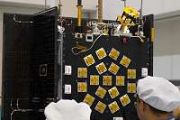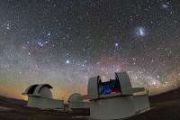
Copernical Team
Beidou launches fifty-sixth Beidou navigation satellite
 The fifty-sixth Beidou navigation satellite, developed by the Fifth Academy of China Aerospace Science and Technology Corporation, recently took to the skies. The satellite is part of the geostationary orbit constellation and serves as the first backup satellite for China's Beidou-3 project.
Upon entering orbit and passing on-orbit tests, it will join the Beidou satellite navigation system
The fifty-sixth Beidou navigation satellite, developed by the Fifth Academy of China Aerospace Science and Technology Corporation, recently took to the skies. The satellite is part of the geostationary orbit constellation and serves as the first backup satellite for China's Beidou-3 project.
Upon entering orbit and passing on-orbit tests, it will join the Beidou satellite navigation system An X-ray look at the heart of powerful quasars
 Researchers have observed the X-ray emission of the most luminous quasar seen in the last 9 billion years of cosmic history, known as SMSS J114447.77-430859.3, or J1144 for short. The new perspective sheds light on the inner workings of quasars and how they interact with their environment. The research is published in Monthly Notices of the Royal Astronomical Society.
Hosted by a galaxy 9.
Researchers have observed the X-ray emission of the most luminous quasar seen in the last 9 billion years of cosmic history, known as SMSS J114447.77-430859.3, or J1144 for short. The new perspective sheds light on the inner workings of quasars and how they interact with their environment. The research is published in Monthly Notices of the Royal Astronomical Society.
Hosted by a galaxy 9. Georgia Tech to lead NASA Center on Lunar Research and Exploration
 Georgia Tech researchers have been selected by NASA to lead a $7.5 million center that will study the lunar environment and the generation and properties of volatiles and dust. The Center for Lunar Environment and Volatile Exploration Research (CLEVER) will be led by Thomas Orlando, professor in the School of Chemistry and Biochemistry.
CLEVER is the successor to Orlando's pioneering REVEA
Georgia Tech researchers have been selected by NASA to lead a $7.5 million center that will study the lunar environment and the generation and properties of volatiles and dust. The Center for Lunar Environment and Volatile Exploration Research (CLEVER) will be led by Thomas Orlando, professor in the School of Chemistry and Biochemistry.
CLEVER is the successor to Orlando's pioneering REVEA Pair of NASA weather satellites to launch from New Zealand
 A new pair of NASA weather satellites is ready for a ride into Earth orbit Monday from New Zealand. The launch time for the mission, called "Coming to a Storm Near You," is 1:30 a.m. EDT.
Called TROPICS, the Nos. 5 and 6 satellites are part of a constellation of extreme weather observatories, also known as CubeSats because of their small size and low weight.
The first successful TROP
A new pair of NASA weather satellites is ready for a ride into Earth orbit Monday from New Zealand. The launch time for the mission, called "Coming to a Storm Near You," is 1:30 a.m. EDT.
Called TROPICS, the Nos. 5 and 6 satellites are part of a constellation of extreme weather observatories, also known as CubeSats because of their small size and low weight.
The first successful TROP NASA selects winners, announces final phase of Space Food Challenge
 NASA has announced eight winning teams and awarded $750,000 in prizes in the second phase of the agency's Deep Space Food Challenge. The winning teams will move on to compete in the third and final phase of the challenge.
As NASA prepares to send astronauts farther into the solar system than ever before, the agency needs food systems that can fortify future crews in deep space for years at
NASA has announced eight winning teams and awarded $750,000 in prizes in the second phase of the agency's Deep Space Food Challenge. The winning teams will move on to compete in the third and final phase of the challenge.
As NASA prepares to send astronauts farther into the solar system than ever before, the agency needs food systems that can fortify future crews in deep space for years at NASA selects Blue Origin as 2nd Artemis Lunar Lander Provider
 To develop a human landing system for the agency's Artemis V mission to the Moon, NASA has selected Blue Origin of Kent, Washington. Through Artemis, NASA will explore more of the Moon than ever before, uncovering more scientific discoveries, and preparing for future astronaut missions to Mars.
Blue Origin will design, develop, test, and verify its Blue Moon lander to meet NASA's human lan
To develop a human landing system for the agency's Artemis V mission to the Moon, NASA has selected Blue Origin of Kent, Washington. Through Artemis, NASA will explore more of the Moon than ever before, uncovering more scientific discoveries, and preparing for future astronaut missions to Mars.
Blue Origin will design, develop, test, and verify its Blue Moon lander to meet NASA's human lan Beam-hopping JoeySat launched

An advanced broadband satellite that will demonstrate next-generation 5G connectivity by providing high-speed internet services has launched into space.
After SpaceX, NASA taps Bezos's Blue Origin to build Moon lander
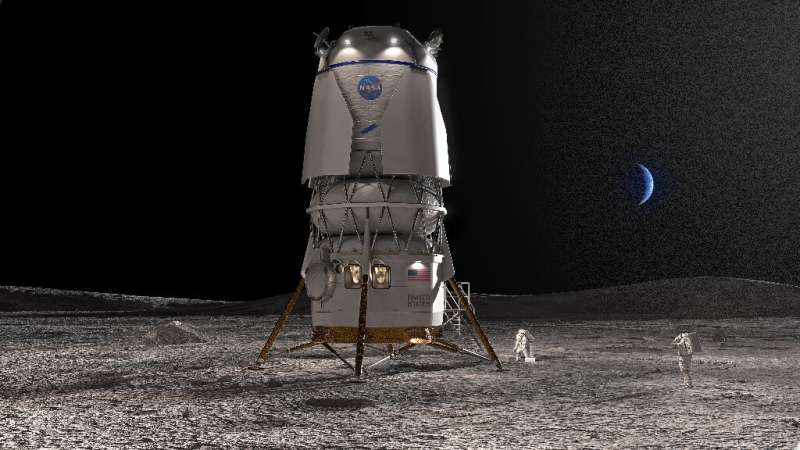
Two years after awarding Elon Musk's SpaceX a contract to ferry astronauts to the surface of the Moon, NASA on Friday announced it had chosen Blue Origin, a rival space company founded by billionaire Jeff Bezos, to build a second lunar lander.
Blue Origin's lander was selected for the Artemis 5 mission, currently scheduled to take place in 2029. The company will first have to demonstrate it can safely land on the Moon without a crew.
Bezos, the founder and former CEO of Amazon, said on Twitter he was "honored to be on this journey with @NASA to land astronauts on the Moon—this time to stay.
Could NASA resurrect the Spitzer space telescope?
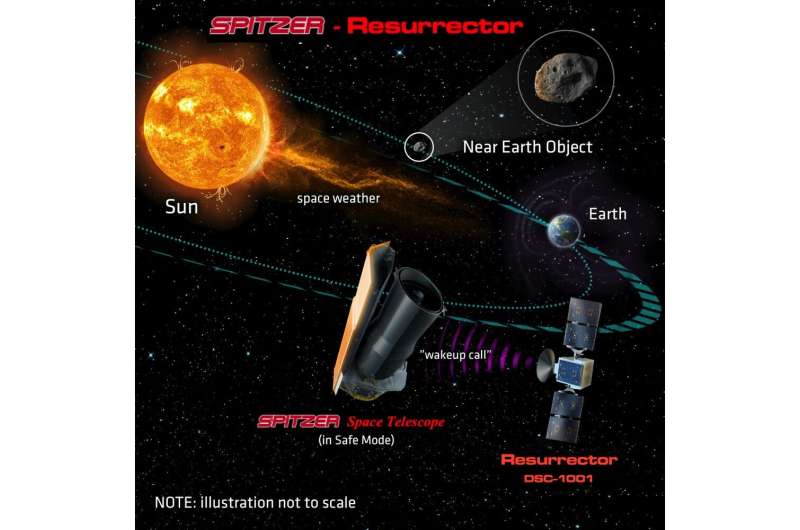
NASA's Spitzer Space Telescope served the astronomy community well for 16 years. From its launch in 2003 to the end of its operations in January 2020, its infrared observations fueled scientific discoveries too numerous to list.
Infrared telescopes need to be kept cool to operate, and eventually, it ran out of coolant. But that wasn't the end of the mission; it kept operating in "warm" mode, where observations were limited. Its mission only ended when it drifted too far away from Earth to communicate effectively.
Now NASA thinks they can reboot the telescope.
The Spitzer was one of four powerful space-based observatories in NASA's Great Observatories program. The other three are the Hubble, the Chandra X-ray Observatory, and the Compton Gamma Ray Observatory.
NASA picks Bezos' Blue Origin to build lunar landers for moonwalkers
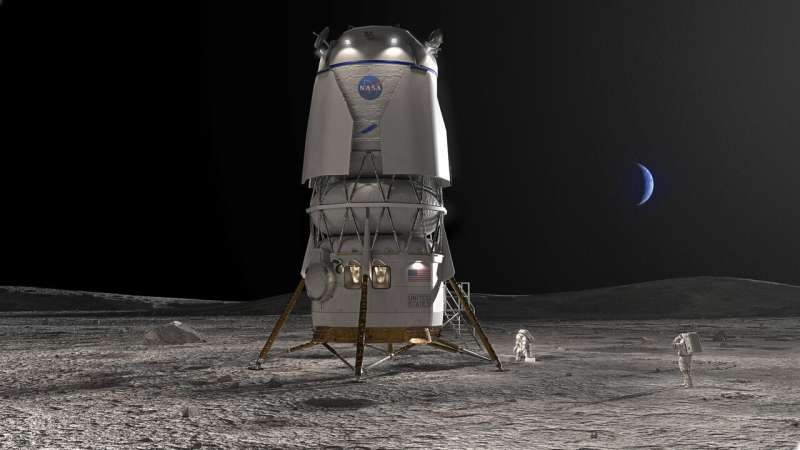
Jeff Bezos' rocket company has won a NASA contract to land astronauts on the moon, two years after it lost out to SpaceX.
Blue Origin received a $3.4 billion contract Friday to lead a team to develop a lunar lander named Blue Moon.















